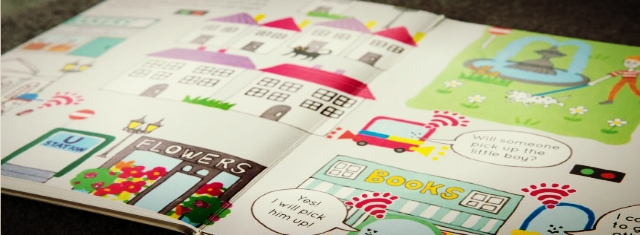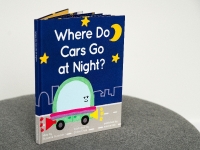Entertainment
Where Do Cars Go at Night?
Childrens book about autonomous driving

"Where Do Cars Go at Night?" (Source: moovel lab | Daimler AG. All rights reserved.)
USPA NEWS -
The children's book "Where Do Cars Go at Night?" presents the complex topic of autonomous driving in an easy-to-understand way. The book aims to encourage children and adults to take part in the social discourse about the future of mobility.The book will premiere at the Frankfurt Book Fair.
Stuttgart, October 18, 2016. With its English-language children's book "Where Do Cars Go at Night?", the research lab of moovel Group GmbH is addressing the question of how autonomous driving will change our mobility, and illustrates possible scenarios for the future. "Where Do Cars Go at Night" premiered at the Frankfurt Book Fair, which takes place from October 19 to 23, 2016.
Autonomous driving is likely to change the world of mobility hugely in the coming ten years. In its twenty-five-page children's book "Where Do Cars Go at Night?", the moovel lab illustrates how our lives could look in the future due to autonomous driving. The illustrated book tells the story of a day in the life of the self-driving car "Carla-15".
During the daytime, Carla-15 and her car friends carry people from A to B. At nighttime, they do shopping, sweep the streets, and water plants in the park. These examples illustrate how, through fleet management and advanced sensor technology, self-driving cars could be used in new fields and relieve the burden on cities. As an electric vehicle in a car-sharing fleet, Carla refuels at the charging station after her work is done. The aim of the project is to make future scenarios tangible using a simple story, and to present the complex topic of autonomous driving in an easy-to-understand way. This should encourage children and adults to take part in the social discourse about the future of mobility.
moovel lab in discussions with school and preschool children -
During a project week, the moovel lab used the book to discuss the future of mobility with school and preschool children. From this, a video was created in which the children describe their visions. The video also includes an interview with Sven Beiker, long-time lecturer on strategies in the auto industry at Stanford University.
During a project week, the moovel lab used the book to discuss the future of mobility with school and preschool children. From this, a video was created in which the children describe their visions. The video also includes an interview with Sven Beiker, long-time lecturer on strategies in the auto industry at Stanford University.
The book and video can be found under www.lab.moovel.com/projects/where-do-cars-go-at-night. In addition, moovel Group GmbH employees present "Where Do Cars Go at Night?" at the Frankfurt Book Fair (hall 4.1.) from October 19, as well as other current projects, such as “Trajectories“, a 3D wax printer that visualizes movements in urban spaces.
moovel lab investigates traffic flows and mobility behavior in urban areas -
moovel lab investigates traffic flows and mobility behavior in urban areas -
The moovel lab is an interdisciplinary team of three, which uses creative projects to tackle the future questions of mobility and human behavior in urban areas. The creative working environment of the lab is open to employees of moovel Group GmbH as well as interested third parties, such as universities or commercial enterprises.
moovel app: Search for, book and pay for mobility -
moovel app: Search for, book and pay for mobility -
Multimodal mobility platforms such as moovel help make the designing of transport in cities easier and more sustainable. The free iOS and Android mobility app combines local public transport, the car-sharing provider car2go, mytaxi, Taxi-Ruf, rental bicycles and Deutsche Bahn. Throughout Germany, car2go, mytaxi and Deutsche Bahn can directly and easily be booked and paid for via the moovel app. In Stuttgart and Hamburg, local public transport tickets for the urban transport associations can also be purchased directly in the moovel app.
more information: https://lab.moovel.com/projects/where-do-cars-go-at-night
Liability for this article lies with the author, who also holds the copyright. Editorial content from USPA may be quoted on other websites as long as the quote comprises no more than 5% of the entire text, is marked as such and the source is named (via hyperlink).








